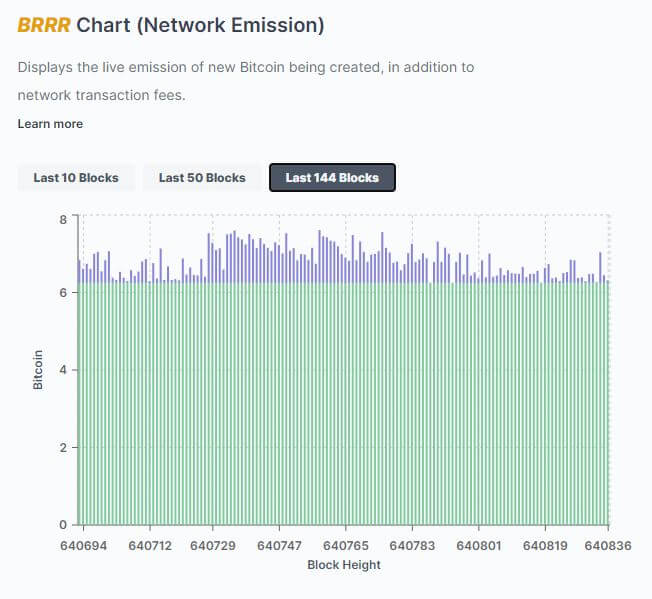CryptoSlate recently sat down with Ethan Vera, the CFO of Luxor Mining Pool and a former investment banker at Goldman Sachs. At Goldman Sachs, he worked on the firm’s blockchain team.We talked about a number of subjects, including Bitcoin mining centralization, how money printing affects cryptocurrency, and why the much-fabled BTC mining “death spiral” never really transpired after the halving. We also talked about how Luxor and their latest project, Hashrate Index, is trying to better improve crypto mining.Bitcoin mining centralization: Is it a concern?CryptoSlate: Do you have any concerns about Bitcoin mining in China?Ethan Vera, CFO of Luxor Mining Pool: My concerns on centralization are definitely at the management level vs. production level. A lot of people are concerned with the headline figure that 65 percent of the world’s hash rate is produced in China. I don’t think that is a concern. It’s a function of the supply chain — China is good at producing machines, they have good energy infrastructure and friendly regulations towards miners. I think the chance of anything occurring at a production level is minimal, especially from the government. But the management of hash rate worries me. There are three entities — Bitmain, Poolin, and f2pool — that have over 50 percent of the network. If you brought in three individuals with their laptops, you could attack the network. If you did it in the middle of the night in China, you could reorg with multiple double spends. Some people argue you could just reverse it, but many think the value of Bitcoin is its immutability. So even if Bitcoin gets double-spent once, that’s a concern. I think the centralization of hashrate management in any country is a risk, even centralization in the U.S. or Canada. Ideally, we get to a place where no single country has more than 30 percent of the network at the management level. I think that would be safest. It’s unclear how certain governments will fight against Bitcoin. If China wants to push its central bank currency, who knows, they may try and attack Bitcoin through a double-spend attack. That would drive Bitcoin price down and make it lose a lot of long-term value. CryptoSlate: There have been moves to nationalize mining in countries like Venezuela and Iran. Does that concern you at all?Ethan: In Venezuela, it’s a bit different where there are miners who are using their operations to escape their devaluing currency. That’s an awesome way to do that and skirt capital controls. But I know governments are trying to get a handle on it, especially the ones with capital controls. I assume they will crack down on mining and seize farms where possible. Same thing with Iran. Iran wants to avoid capital flight from civilians, but the government themselves want to use Bitcoin to avoid sanctions. Getting control of Bitcoin mining is a good way to avoid sanctions, similar to how North Korea does with Monero mining. I don’t have any concerns about it as each of these jurisdictions has a few percentage points of the hash rate. This just highlights the need for governments to support the local mining industry, where mining is becoming a natural security concern in a world where Bitcoin is becoming increasingly valuable. I think it will put pressure under the Canadian and U.S. government to at least be supportive of it. Debunking common crypto-mining misconceptions and incorrect narrativesCryptoSlate: There have been attempts to value Bitcoin using hash rate and the energy consumption of the network. Is there any credence to the statement “Bitcoin’s intrinsic value is cost production.”? Ethan: I don’t think so right now. I think the Bitcoin price is driven highly by speculation and supply/demand, which miners contribute to. Hashrate follows price and not so much the other way. Miners may cause sell pressure during times where their margins are squeezed and they need to sell off their balance sheets. That has some effect on price. Overall, miners are more reactive to Bitcoin price than driving it, so the idea of cost of production of being a floor to the Bitcoin price doesn’t make much sense. If the Bitcoin price trades down because there is more supply, we’ll just see a decrease in hash rate and the cost of production will then get lowered. CryptoSlate: There was a lot of discussion about a Bitcoin death spiral around the halving. As an insider in the mining space, can you explain why that didn’t happen? Ethan: Yeah, in the most extreme example, a death spiral would happen after block 1 of the post-halving difficulty epoch. That’s when there are 2,015 blocks to go until the next difficulty adjustment. In that case, if Bitcoin’s price crashed even further, miners would be less incentivized to mine because you’re getting paid less reward. In this extreme example, the block reward is cut in half while the price of Bitcoin is down significantly. That would be a double decrease in revenue for miners. Even in that case, there will be low-cost miners working on the network that would eventually get to the difficulty adjustment. In general, I think the difficulty adjustment will do its job so there will be no death spiral. There will be times when there are longer block times, but there won’t be times when there are no blocks solved. There are always miners that will be profitable. With the recent halving, it didn’t happen — there was a 25-30 percent drop in the hash rate at most. And that loss was from miners that were less profitable. There was at least ~100 exahashes/sec remaining on the network. 

Mining pool co-founder on Bitcoin mining centralization, ‘death spirals’, and money printing
341








